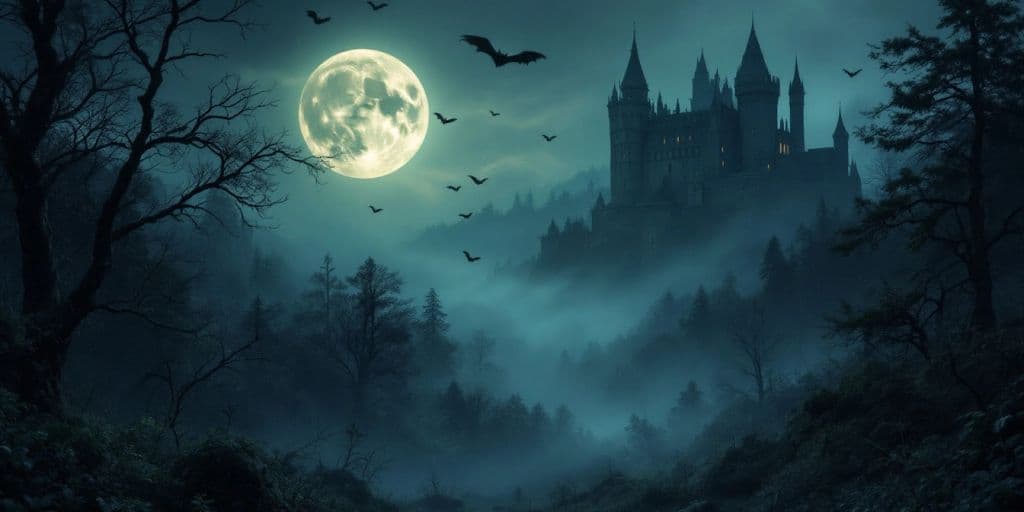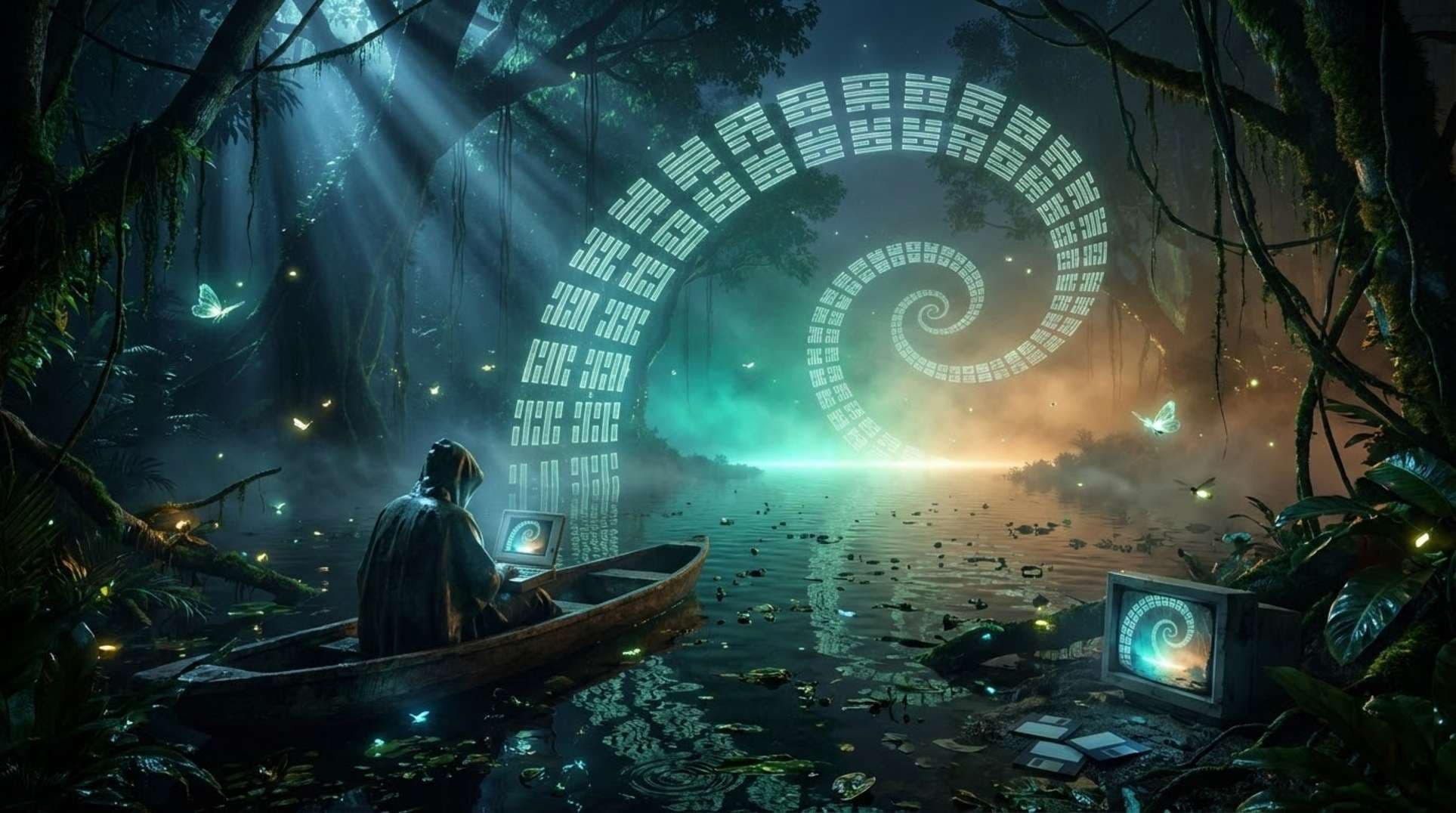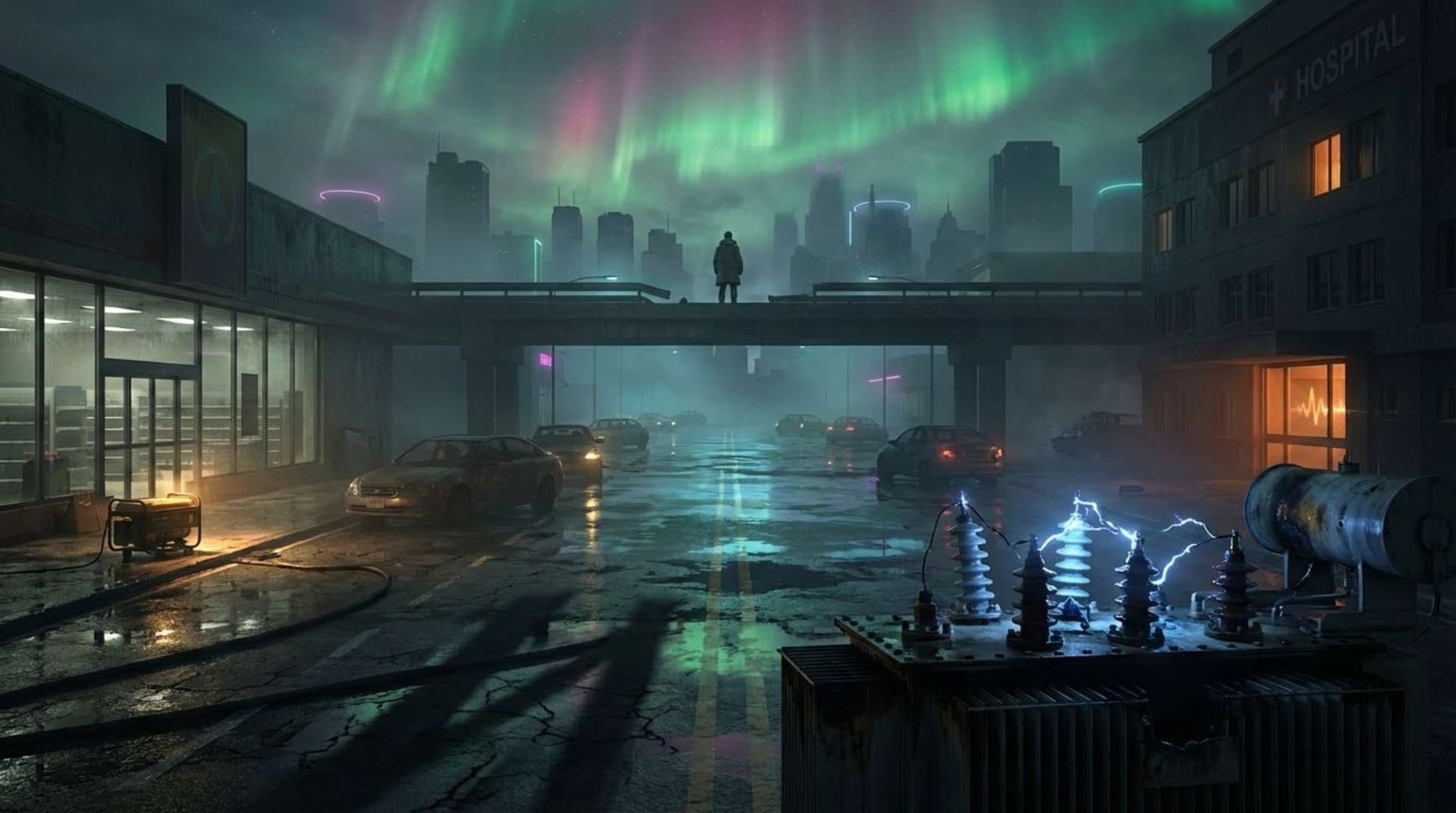The concept of vampires has intrigued people across the globe for centuries. From ancient myths to modern stories, the idea of bloodsucking creatures has evolved, blending fact with fiction. This article explores the origins of vampire legends, their cultural significance, and the impact they have had on society and literature. Are vampires real? Let’s dive into the fascinating world of these legendary beings.
Key Takeaways
- Vampire stories can be found in nearly every culture, often reflecting local fears and beliefs.
- Many vampire legends originated from real historical events or medical conditions.
- The 18th-century vampire panic in Europe led to public hysteria and even executions of suspected vampires.
- Modern self-identified vampires exist, with some claiming to drink blood or feed off others’ energy.
- Vampires have been popularized in literature and media, shaping our understanding of these mythical creatures.
The Origins of Vampire Legends
Ancient Civilizations and Blood-Drinking Spirits
Legends of creatures that drink blood have been around for thousands of years. Many ancient cultures, like the Mesopotamians and Greeks, told stories of spirits that consumed blood or flesh. These early tales often described these beings as demons or evil spirits. For example:
- Mesopotamian ghouls were said to feast on the dead.
- In ancient Egypt, the goddess Sekhmet was known for her bloodlust.
- The Greeks had tales of Lamia, a woman who turned into a monster to devour children.
The 18th-Century Vampire Controversy
The idea of vampires as we know them today really took off in the 18th century, especially in Eastern Europe. During this time, many people believed in the existence of vampires, leading to widespread fear and even public executions of suspected vampires. This period saw:
- Mass hysteria about vampire sightings.
- The publication of vampire stories that spread the legend.
- The rise of vampire hunters who claimed to protect communities.
The Role of Eastern Europe in Vampire Folklore
Eastern Europe, particularly Transylvania, played a crucial role in shaping vampire legends. The region’s rich folklore included tales of the undead rising from their graves. Some key points include:
- Vlad the Impaler, a historical figure, inspired many vampire stories.
- Local traditions often involved rituals to prevent vampirism, such as burying the dead with garlic.
- The fear of vampires led to unique burial practices, like placing stones on graves to keep the dead from rising.
The fascination with vampires reflects deep-seated fears and cultural beliefs that have evolved over centuries. Understanding these origins helps us see why vampire legends still captivate us today.
Vampires in Different Cultures
Vampire Myths in Mesopotamia and Egypt
Vampire legends can be traced back to ancient civilizations like Mesopotamia and Egypt. In these cultures, blood-drinking spirits were often depicted as demons or evil entities. For example, the goddess Sekhmet in Egypt was known for her fierce nature and bloodlust. These early tales laid the groundwork for what we now recognize as vampire folklore.
European Vampire Legends
In Europe, particularly in Eastern countries, vampire myths flourished. The 18th-century vampire controversy sparked widespread fear and fascination. Many believed that certain individuals could return from the dead to prey on the living. This led to public hysteria, with some communities even conducting vampire hunts.
Vampiric Entities in Africa and Asia
Across Africa and Asia, various cultures have their own unique vampire-like beings. For instance, in Sri Lanka, the Riri Yaka, or Blood Demon, is said to emerge from the dead to feast on the living. Similarly, the Jiangshi in China is a reanimated corpse that drains the life force from its victims. These diverse legends highlight the universal fear of the undead and the unknown.
The 12 spookiest vampire legends from around the world show that these myths have been haunting people for centuries. Some of them are actually rooted in fact, which makes them all the more creepy.
Historical Accounts and Real-Life Cases
The Case of Mercy Brown
Mercy Brown was a young woman from Rhode Island who died in 1892. After her death, her family fell ill, and locals believed she was a vampire responsible for their suffering. To stop her, they exhumed her body and found it remarkably well-preserved. They decided to burn her heart and mix the ashes with water to give to her sick brother. This case is one of the most famous examples of vampire hysteria in America.
Vlad the Impaler: The Real Dracula
Vlad III, known as Vlad the Impaler, ruled in the 15th century and is often linked to the Dracula legend. He was notorious for his brutal methods, including impaling his enemies. His reputation for cruelty and bloodshed led to tales of him drinking the blood of his foes, which contributed to the vampire mythos. His life inspired Bram Stoker’s famous novel, making him a lasting figure in vampire lore.
The 18th-Century Vampire Epidemics
During the 1700s, Europe experienced a wave of vampire panic. Many people believed that the dead were rising from their graves to attack the living. This led to numerous exhumations and public executions of suspected vampires. The hysteria was fueled by superstitions and a lack of understanding of diseases like rabies and porphyria, which could explain some of the symptoms attributed to vampires.
| Year | Location | Event Description |
|---|---|---|
| 1730 | Eastern Europe | Reports of vampire sightings led to public panic. |
| 1755 | Hungary | Villagers exhumed bodies, fearing they were vampires. |
| 1780 | Poland | A supposed vampire was executed after being exhumed. |
The vampire legends often reflect the fears and anxieties of the times, showing how folklore can shape societal beliefs.
These historical accounts reveal how deeply rooted the vampire myth is in human culture, blending fear, superstition, and real-life events into a fascinating narrative.
Modern Interpretations and Real Vampires
Self-Identified Vampires Today
In today’s world, some people identify as vampires. They often drink small amounts of blood, believing it helps them feel better. These individuals usually keep their practices private to avoid drawing attention. Communities of self-identified vampires can be found online and in various cities. They often seek out willing donors for their rituals, which can include drinking blood or even just feeding off the energy of others.
Psychic Vampires and Energy Feeding
Not all modern vampires drink blood. Some claim to be psychic vampires, who believe they can absorb energy from others. They say that without this energy, they feel tired or depressed. Here are some common traits of psychic vampires:
- They often feel drained after social interactions.
- They may seek out certain people to recharge their energy.
- They believe their well-being depends on this energy exchange.
Vampires in Popular Culture
The fascination with vampires has grown significantly since the publication of Bram Stoker’s Dracula. This book set the stage for many vampire stories in movies and TV shows. Some notable examples include:
- Interview with the Vampire
- Twilight
- Buffy the Vampire Slayer
The allure of vampires in popular culture reflects our ongoing interest in the mysterious history of magic and the supernatural.
As long as there are stories to tell, the idea of vampires—real or imagined—will continue to captivate our imaginations.
The Psychological and Social Impact of Vampire Legends

Fear and Anxiety Induced by Vampire Myths
Vampire legends have long stirred fear and anxiety in communities. These tales often reflect deeper societal fears, such as:
- Death and the unknown: The fear of what happens after we die.
- Disease and contagion: Many vampire stories arose during times of plague, linking the undead to illness.
- Social control: Myths can serve to enforce societal norms and behaviors.
Social Influence and Peer Pressure
The belief in vampires can spread through social influence. When one person believes in a vampire story, it can lead others to feel the same way. This can happen through:
- Groupthink: People may conform to the beliefs of their peers.
- Media portrayal: Movies and books can amplify these beliefs, making them seem more real.
- Community traditions: Local customs can reinforce the idea of vampires, leading to shared beliefs.
The Illusory Truth Effect
The illusory truth effect suggests that repeated exposure to a myth can make it seem more believable. This can happen with vampire legends through:
- Storytelling: The more a story is told, the more it is accepted as truth.
- Cultural references: Frequent mentions in media can solidify these myths in public consciousness.
- Personal experiences: People may interpret strange occurrences as evidence of vampires, reinforcing their beliefs.
Understanding the psychological impact of vampire legends helps us see how fear and belief can shape societies. These stories are not just tales; they reflect our deepest anxieties and cultural values.
Scientific Explanations for Vampire Myths

Medical Conditions Linked to Vampire Legends
Many vampire legends may have originated from real medical conditions. Here are a few:
- Porphyria: This blood disorder can cause sensitivity to sunlight, leading to symptoms that resemble vampire traits.
- Rabies: This disease can cause aggressive behavior and sensitivity to light, which might have contributed to vampire myths.
- Goiter: An enlarged thyroid can lead to a swollen neck, which may have been misinterpreted as a sign of vampirism.
The Role of Rabies and Porphyria
Rabies and porphyria are two conditions that have been linked to vampire legends. Rabies can cause aggressive behavior and aversion to light, while porphyria can lead to skin issues when exposed to sunlight. These conditions might explain some of the characteristics attributed to vampires, such as their fear of sunlight and bloodlust.
Debunking the Supernatural Elements
Many elements of vampire folklore can be explained through science. For example:
- Blood Consumption: The idea of vampires drinking blood may stem from the real-life practice of bloodletting in ancient medicine.
- Immortality: The myth of eternal life could be linked to the preservation of bodies through mummification or other means.
- Transformation: Stories of vampires transforming into bats or wolves may have been inspired by real animals that exhibit similar behaviors.
Understanding the origins of vampire myths helps us see how real-life conditions can shape our stories and fears.
Summary Table of Medical Conditions
| Condition | Symptoms Related to Vampires | Possible Connection to Myths |
|---|---|---|
| Porphyria | Sensitivity to sunlight | Fear of sunlight |
| Rabies | Aggression, light sensitivity | Bloodlust |
| Goiter | Swollen neck | Appearance of vampires |
Vampires in Literature and Media
Bram Stoker’s Dracula and Its Influence
Bram Stoker’s Dracula, published in 1897, is one of the most famous vampire novels ever written. It introduced Count Dracula, a character that has become a symbol of the vampire genre. This book not only shaped the way vampires are portrayed in literature but also influenced countless films and adaptations. The character of Dracula is often depicted as both charming and terrifying, which has led to a lasting fascination with vampires in popular culture.
Vampires in Modern Literature
In recent years, vampire stories have evolved. Here are some notable examples:
- Twilight series by Stephenie Meyer: This series introduced a new generation to vampires who sparkle in sunlight and have romantic relationships with humans.
- The Vampire Chronicles by Anne Rice: These books explore the lives of vampires in a more philosophical and emotional way.
- The Southern Vampire Mysteries by Charlaine Harris: This series inspired the TV show True Blood and features vampires living openly among humans.
Vampires in Film and Television
Vampires have also made a significant impact on film and television. Some key films include:
- Nosferatu (1922): One of the first vampire films, it set the tone for horror cinema.
- Interview with the Vampire (1994): Based on Anne Rice’s novel, it starred Tom Cruise and Brad Pitt, bringing a modern twist to vampire lore.
- What We Do in the Shadows (2014): A comedic take on vampire life in modern society, showcasing their mundane struggles.
The portrayal of vampires in media reflects our fascination with the supernatural and the unknown. These stories allow us to explore themes of love, fear, and morality in a unique way.
Conclusion
Vampires continue to captivate audiences through literature and media. Their evolution from terrifying creatures to complex characters shows how our understanding of these legends has changed over time. Whether in books, movies, or TV shows, vampires remain a powerful symbol of our fears and desires.
Vampires have long captivated our imaginations in books, movies, and shows. These mysterious creatures often symbolize deeper themes like fear, desire, and the unknown. If you’re curious to explore more about the fascinating world of vampires and their impact on culture, visit our website for a treasure trove of insights and resources!
Final Thoughts on the Reality of Vampires
In conclusion, the idea of vampires has fascinated people for ages. These stories mix fear, curiosity, and culture, making us think about what we believe. While some tales might have roots in real events, many are just made-up stories. They show us our fears and the need to tell stories. As we look deeper into these legends, we learn not just about the myths but also about ourselves. So, the next time you hear a vampire story, remember it’s more than just a tale; it’s a peek into human nature.
Frequently Asked Questions
What are urban legends?
Urban legends are stories that are passed around in communities. They often involve strange or spooky events and are usually told as if they really happened, even though they might not be true.
Why do people believe in urban legends?
People are drawn to urban legends because they can be exciting and tap into common fears. When friends or family share these stories, they can seem more believable.
How do urban legends spread?
Urban legends spread through conversations, social media, and other ways of sharing stories. Each time someone tells the story, it can change a little, which helps it stay alive.
Are urban legends based on real events?
Yes, some urban legends come from real events or have some truth to them. However, they often get exaggerated or changed to make them more interesting.
What purpose do urban legends serve?
Urban legends often act as cautionary tales, warning people about dangers or teaching lessons. They also provide fun stories for people to share.
How can you tell if an urban legend is true?
It can be tricky to figure out if an urban legend is true. Checking trusted sources, looking for proof, and thinking about whether the story seems exaggerated can help.




